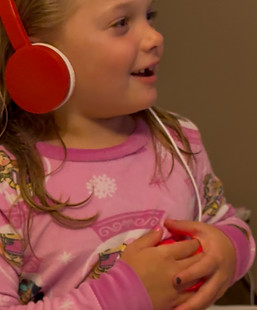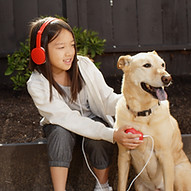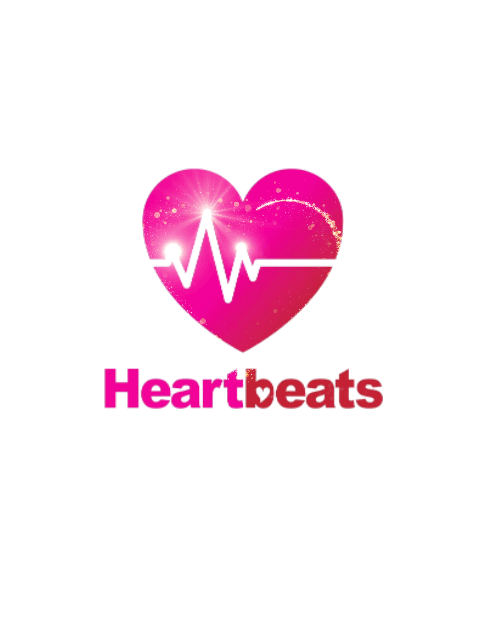
-
Role-Playing Games: Our Heartbeats Electronic Stethoscope can be a key accessory in role-playing games, such as playing doctor, nurse, or veterinarian, encouraging imaginative play and empathy as children pretend to care for others.
-
Storytelling and Creative Learning: It can be used as a prop in storytelling or creative activities, where children imagine discovering new sounds or investigating mysterious noises.
-
Exploration of Body Sounds: Children can explore different body sounds by placing the chest piece on various areas (chest, back) and hearing real-time heartbeat
-
Listening After Activity: Encourage children to listen to their heartbeat before and after running or jumping, demonstrating how physical activity affects heart rate.
MAKE DOCTOR VISITS EASIER!
Our Heartbeats Electronic Stethoscope is an excellent tool for educational purposes, helping children and adults alike learn about the human body, animal health, and various environmental sounds. Its engaging features make it ideal for aspiring young doctors, veterinarians, or curious minds interested in science and medicine, or anyone interested in exploring different sounds in a fun and interactive way.
Kids can hear heartbeats, breathing sounds, and other body sounds, helping them understand the concept of the human body and its functions.
Encourages children to explore their own bodies, family members, or even pets, sparking curiosity about how things work inside living beings.
Our Heartbeats electronic stethoscope improves children's listening skills, allowing them to focus and identify different sounds, which are fundamental to learning and cognitive development.
By pretending to be doctors or nurses, children learn about empathy, communication, and social roles, all while having fun in a safe, imaginative way.

Your heart is the most important organ in your body. It pumps your blood to all the organs in your body. Just like your arms, the heart has two sides, a right side and a left side. Each side has two chambers. The upper chambers are called atriums, the lower chambers are called ventricles.
The right side of the heart receives blood back from the body from a blood vessel called the superior vena cava into the right atrium. The right atrium then sends the blood into the right ventricle. A valve called the tricuspid valve separates the right atrium from the right ventricle. The right ventricle then sends the blood to your lungs to refresh your blood with oxygen. A valve called the pulmonic valve separates the right ventricle from the Pulmonary artery which then sends the blood to your lungs. When blood is filling the right side of the heart, the cycle is called “diastole”.
Once your blood picks up fresh oxygen in your lungs, it is returned to your heart through the pulmonary veins, into the left side of your heart, into the left atrium. The left atrium is separated from the left ventricle by a valve, called the mitral valve. Once the oxygenated blood is returned to the left ventricle from your lungs, it is then sent to all the organs in your body from the left ventricle, via the aorta. The left ventricle is separated from the aorta by the aortic valve. When blood is filling the left side of the heart, the cycle is called “systole”.
The sounds that you hear when you listen to your heart, are the sounds made by the valves that separate the chambers closing. The closing of the mitral valve that separates the left atrium from the left ventricle causes the first sound, called “S1”. The closing of the aortic valve, that separates the left ventricle from the aorta, causes the second sound, “S2”.
The best place to listen to your heart is just to the left or right of the middle of your chest, two finger spaces below your collar bone. You will hear S1 and S2 as “Boom, Boom… Boom, Boom, Boom Boom. Count how many times you hear that in 60 seconds. That is called your “Heart Rate”.
When you breathe in, you inhale oxygen into your lungs. Your lung has a left side and a right side. Blood vessels called “capillaries” transfer the oxygen into your blood. Your heart then pumps the oxygen rich blood back to your left atrium.
The best place to listen to your lungs is on the side of your chest, just under your arm pit or on your back, just below your shoulder blades. Take a deep breath in , then blow it out. You may also still hear your heartbeat. Your lungs will make a “whooshing sound”, like the wind, when you breathe in and out. Try coughing! The sound of your cough will be louder.
Your stomach and intestines process the food that you eat. As the process happens, sounds called “bowel sounds” happen which can sound like “gurgling”. Place you stethoscope just below your belly button to listen to bowel sounds.

You can also listen to your dog’s or cat’s heart, lungs or belly, if they will let you.
Move your stethoscope along their belly and sides to repeat what we told you about the heart, lungs and belly.

Using an electronic stethoscope allows you to listen to your surroundings by amplifying sounds, being aware of the sounds around you, which can include natural sounds, conversations, heartbeats and breathing and other ambient noises.

Your Brain is also a major organ in your body. It controls almost everything else.
Place your stethoscope on top of your head, or on your temple, which is beside your forehead. You will hear a combination of blood flow and brain activity which is the control center of your body.

If your Mom has your brother or sister still in her uterus (Belly), sometimes you can hear their heartbeat.
Have you Mom move your stethoscope around her belly until she finds the baby’s heartbeat. It will be so much fun!





